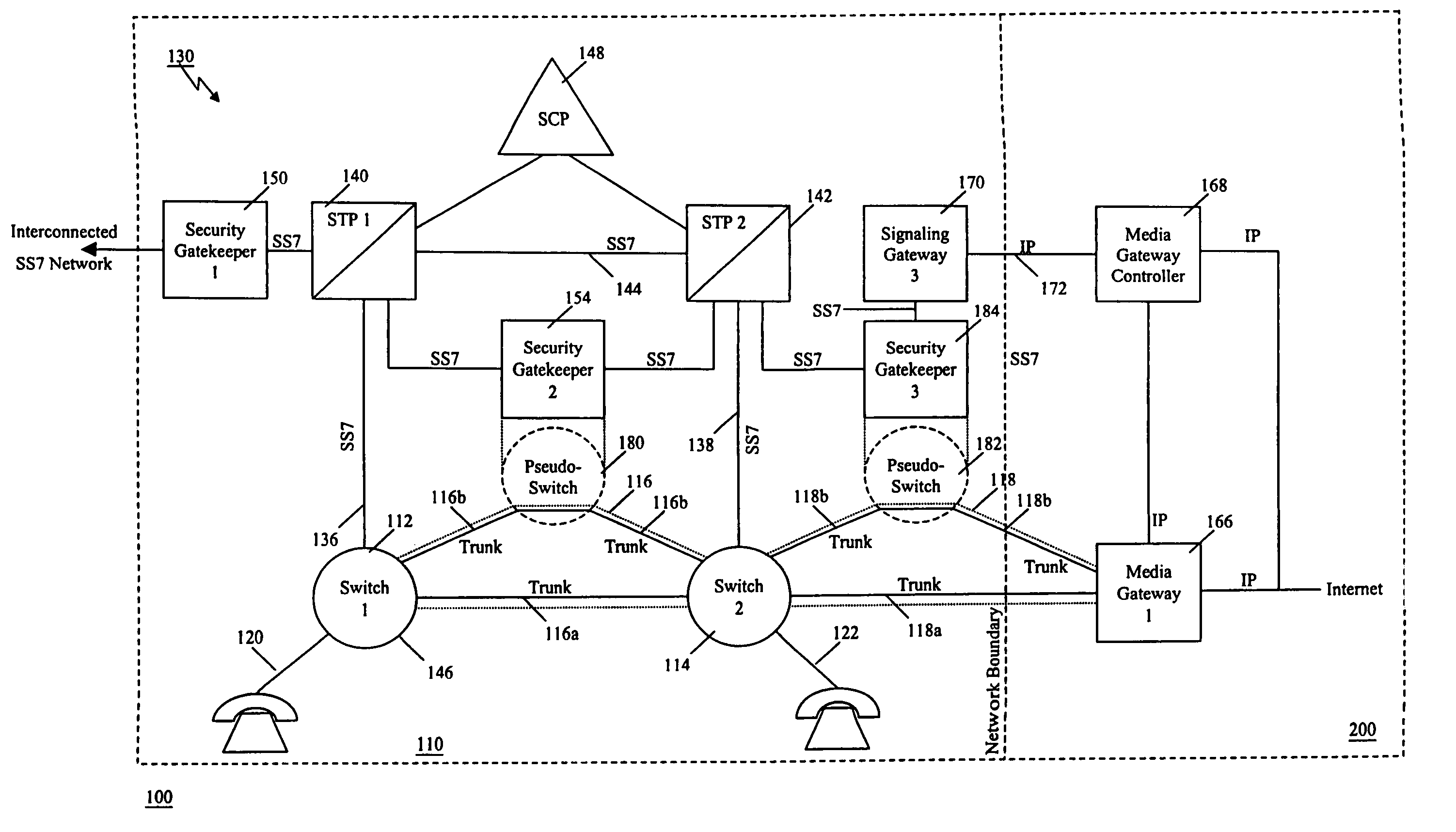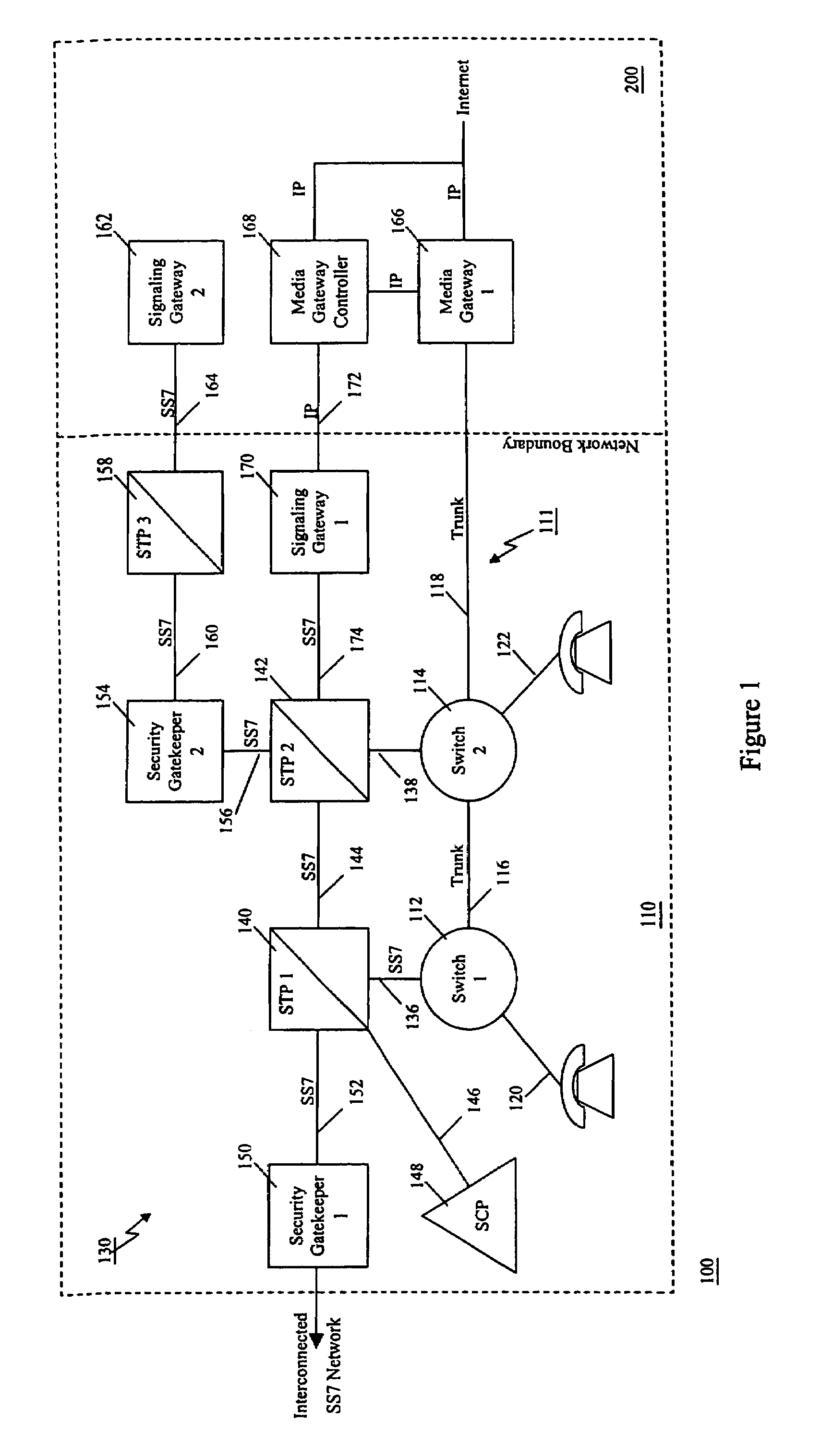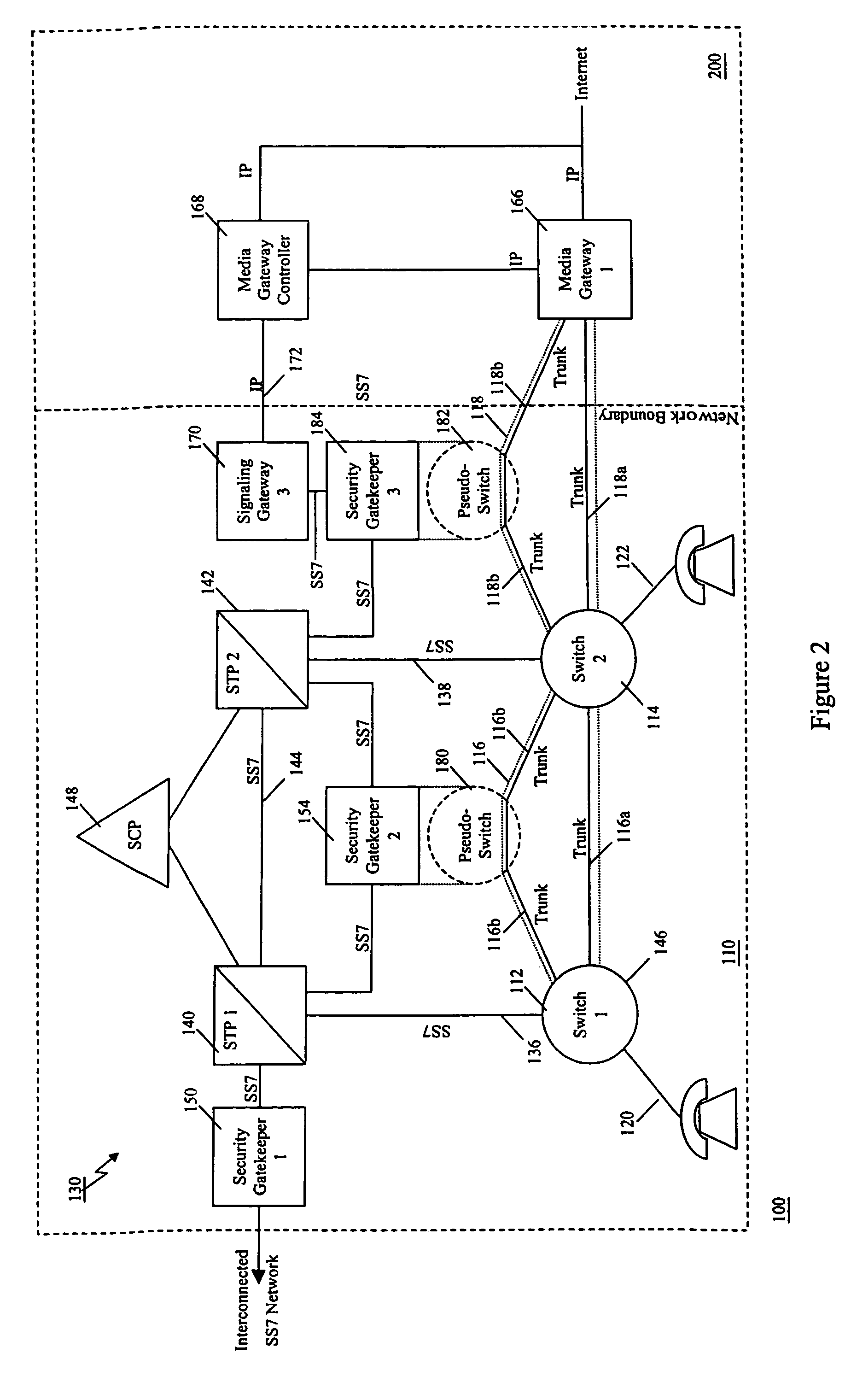Method and apparatus for in context mediating common channel signaling messages between networks
a common channel and network technology, applied in the field of switches telephone networks, can solve the problems of system failure to provide a level of security that would protect the lec's ss, unintentionally misdirected or erroneous messages, and additional interface problems, so as to avoid “hanging up, facilitate screening, and network resources are available more quickly
- Summary
- Abstract
- Description
- Claims
- Application Information
AI Technical Summary
Benefits of technology
Problems solved by technology
Method used
Image
Examples
Embodiment Construction
[0102]Capabilities defined in AIN 0.1 and succeeding releases provide an SCP with a significant degree of control over switch processing. This control is exercised when the SCP returns an AIN response message to a switch from which it has received an AIN query. AIN capabilities enable a service provider to rapidly develop and deploy services that require control of the switch. As originally envisioned, it was assumed that a single service provider would own both the switch and SCP, and that the SCP would be used by the service provider to control their switch. Recent initiatives, however, have raised the possibility that the same switch capabilities that were designed to be controlled by the owning service provider, may now be made available to other service developers. This access may take the form of either (i) access to the original service provider's service creation capabilities in its SCPs, or (ii) interconnection with external SCPs (where the services are defined).
[0103]The c...
PUM
 Login to View More
Login to View More Abstract
Description
Claims
Application Information
 Login to View More
Login to View More - R&D
- Intellectual Property
- Life Sciences
- Materials
- Tech Scout
- Unparalleled Data Quality
- Higher Quality Content
- 60% Fewer Hallucinations
Browse by: Latest US Patents, China's latest patents, Technical Efficacy Thesaurus, Application Domain, Technology Topic, Popular Technical Reports.
© 2025 PatSnap. All rights reserved.Legal|Privacy policy|Modern Slavery Act Transparency Statement|Sitemap|About US| Contact US: help@patsnap.com



